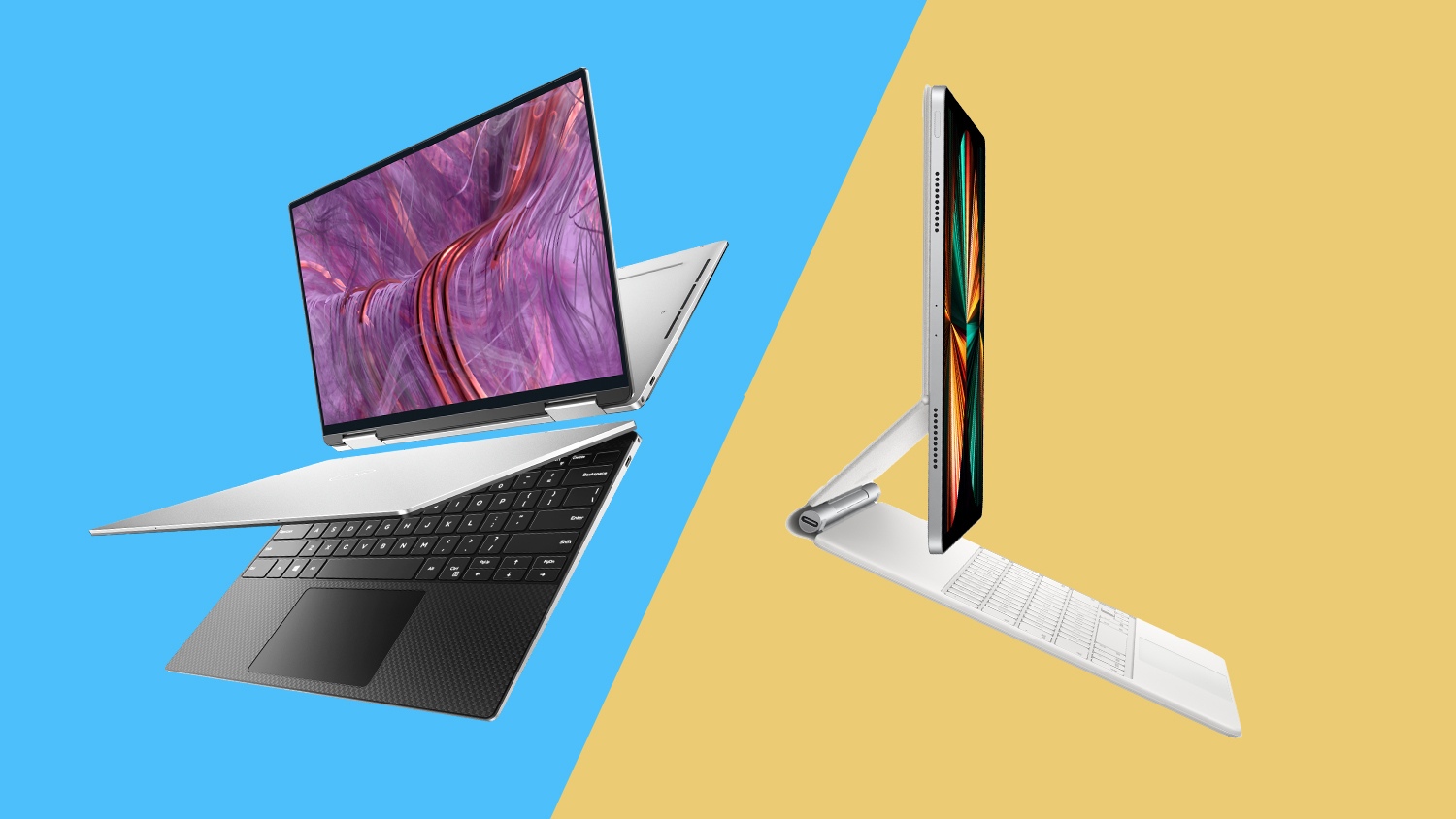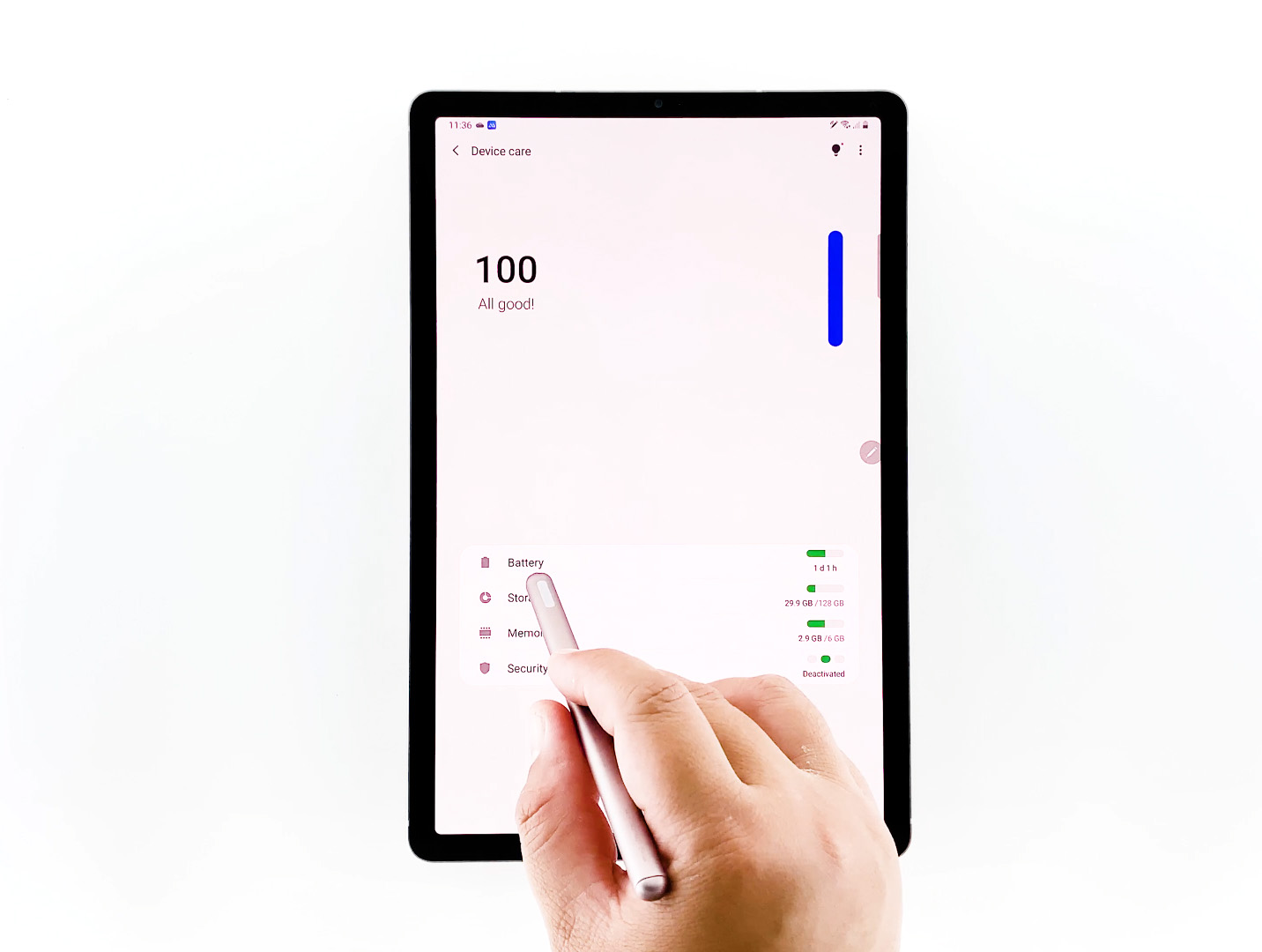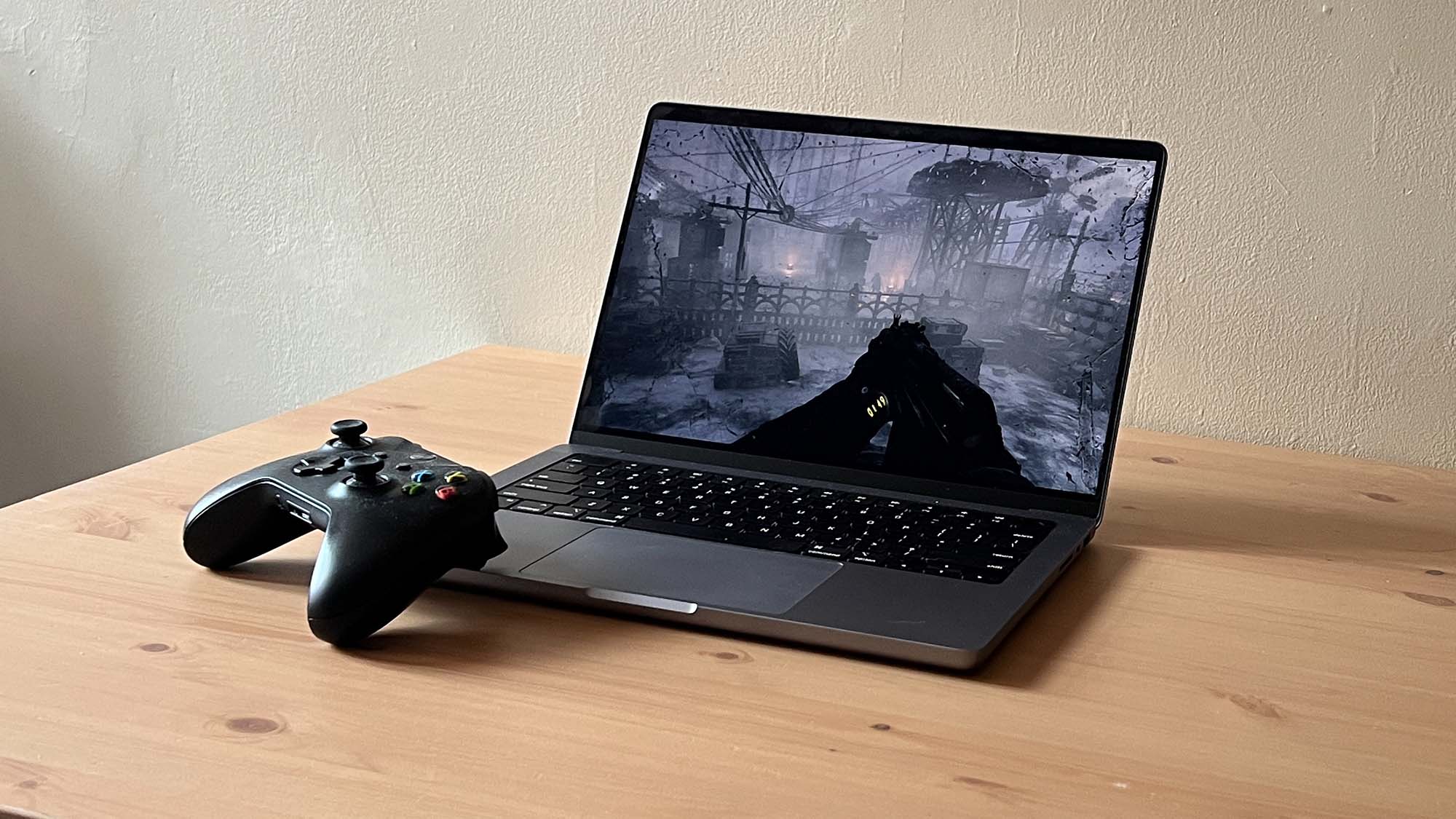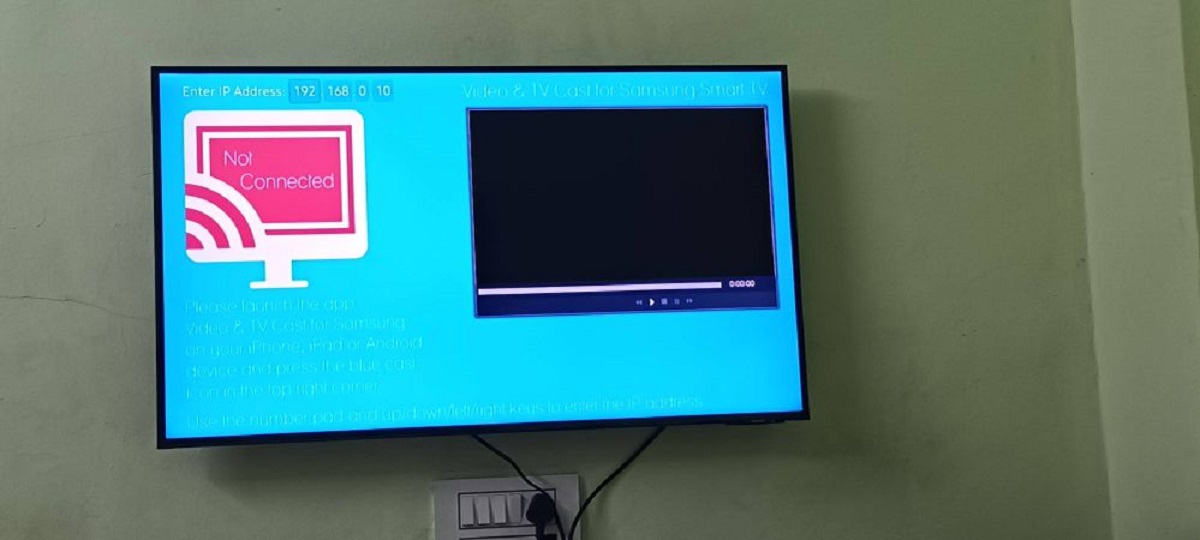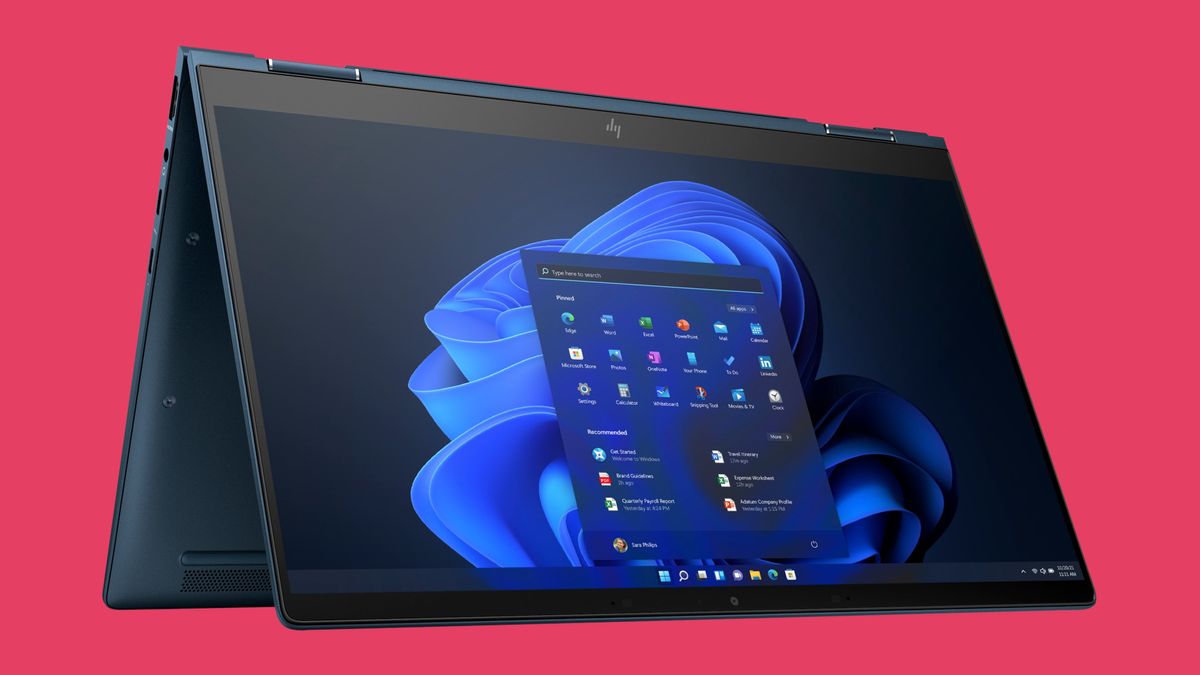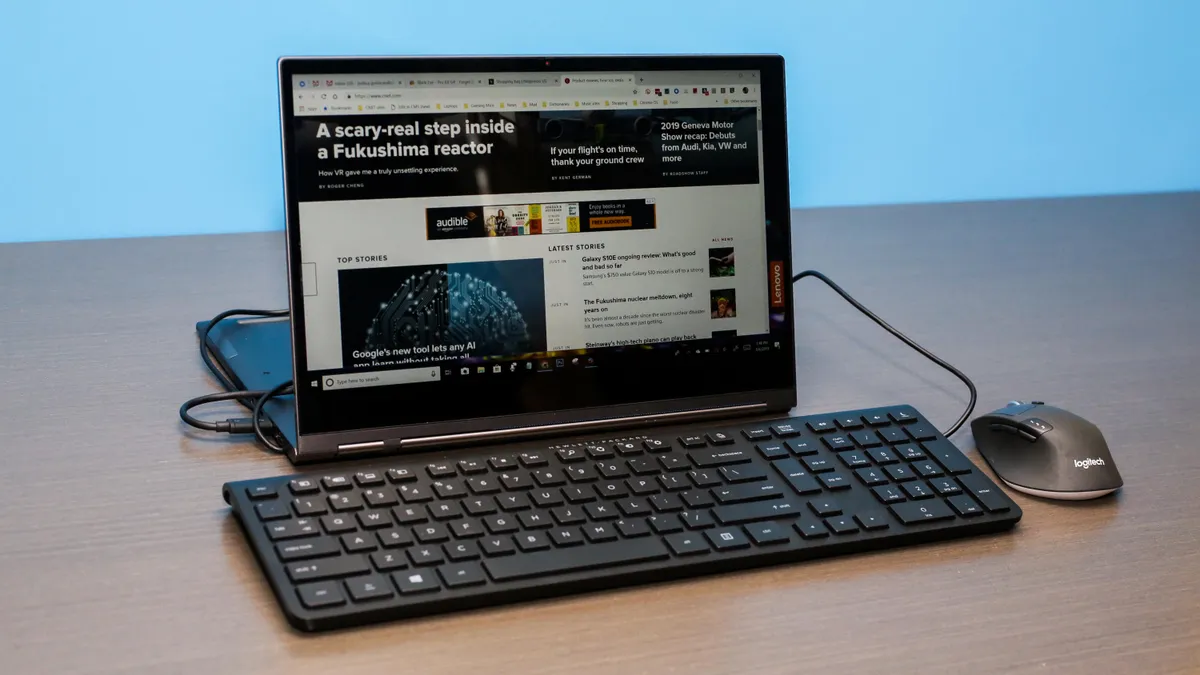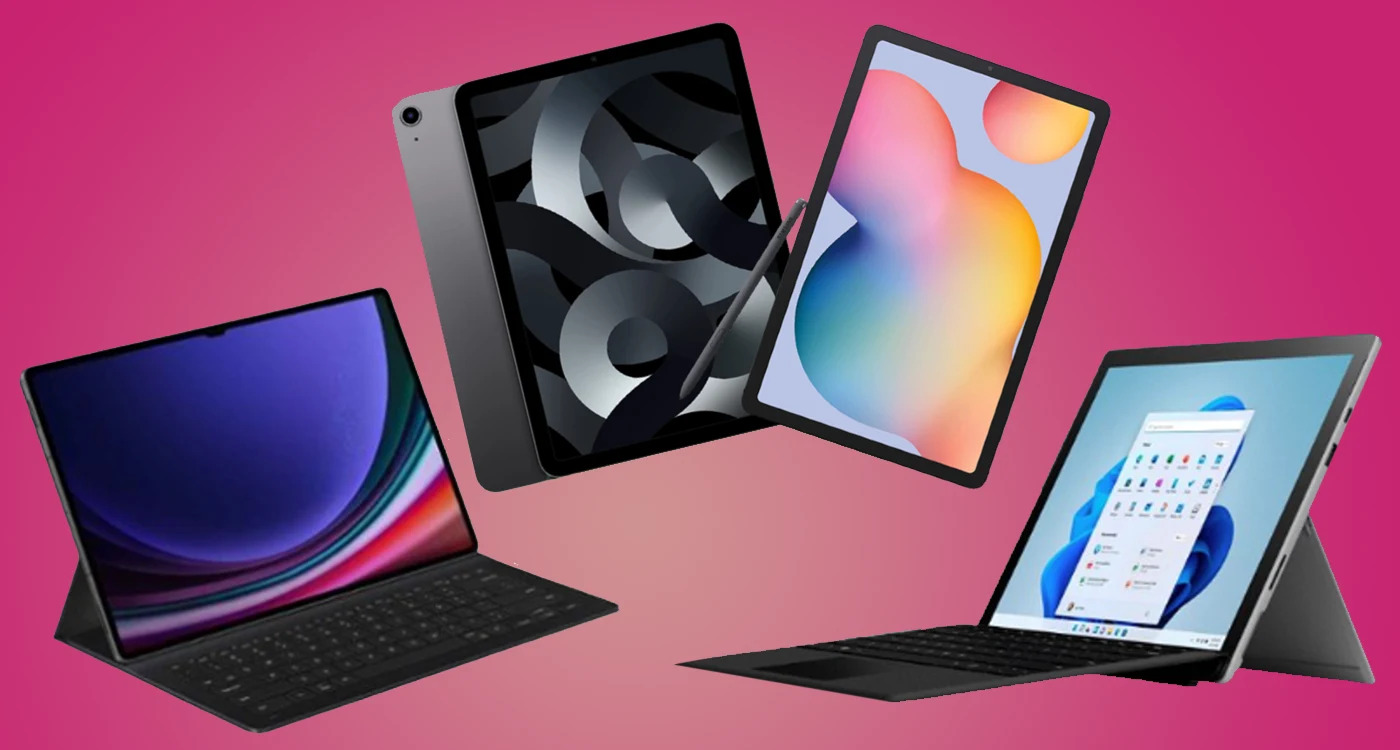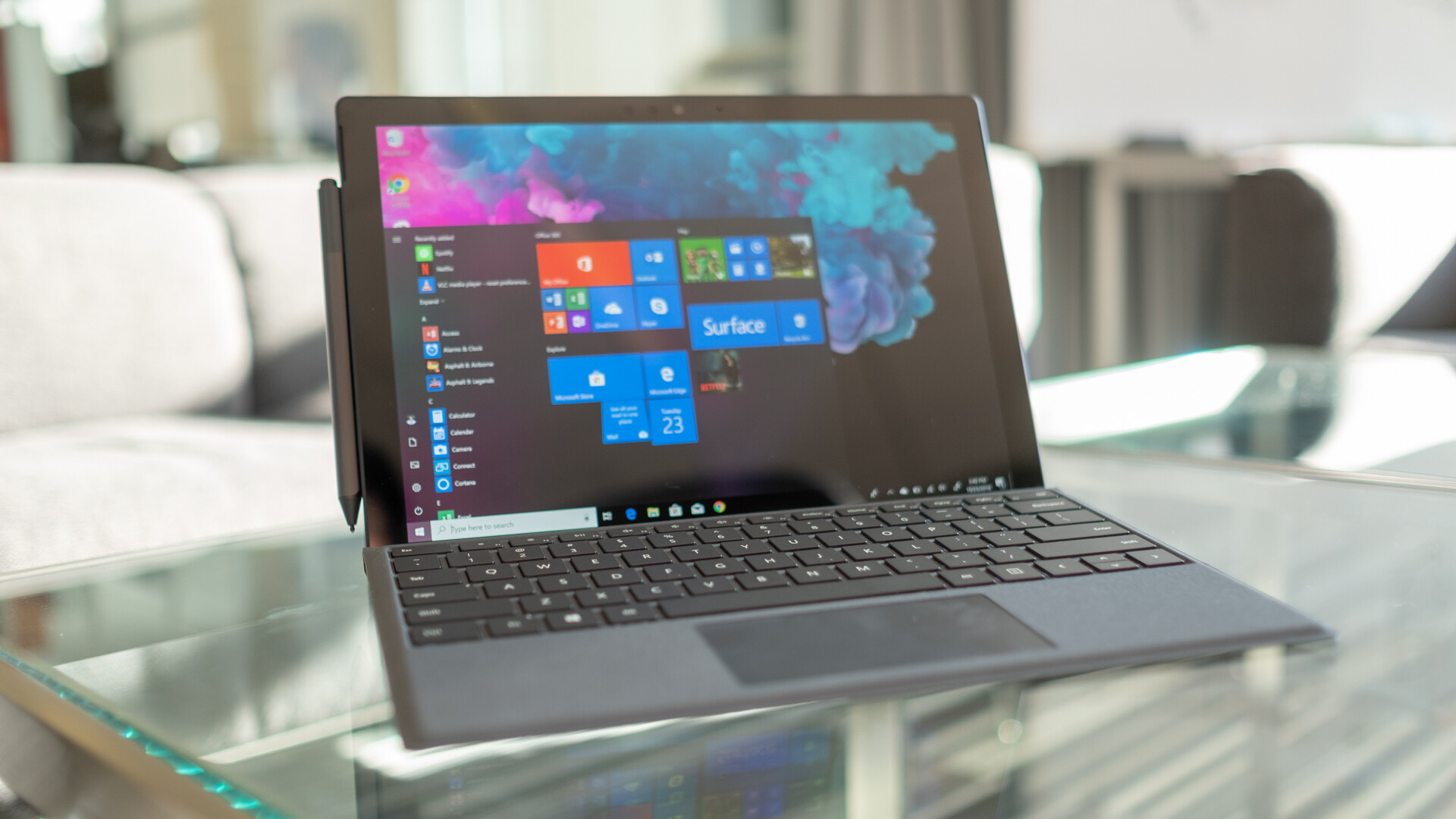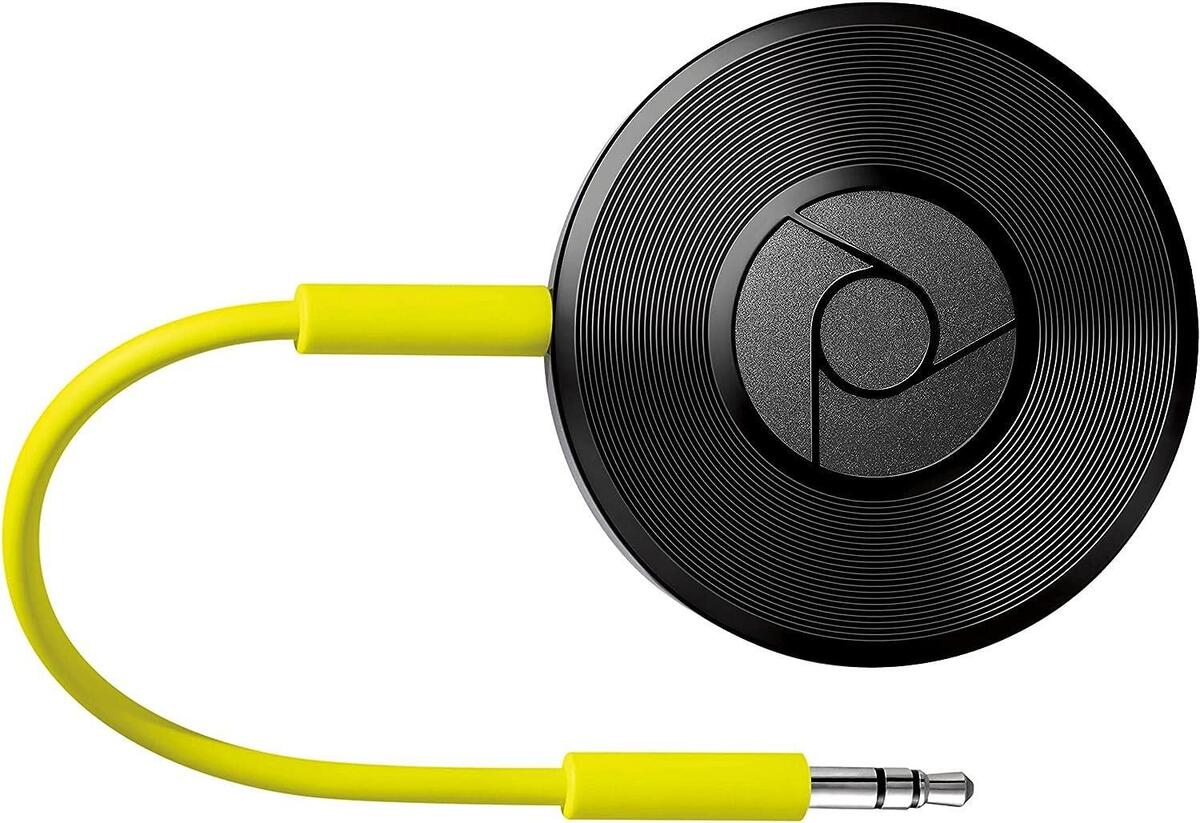Introduction
When it comes to choosing between a tablet and a laptop, many factors come into play. Technology has evolved significantly over the years, giving us a wide range of portable devices for work, entertainment, and communication. Tablets and laptops are two popular options, each with its unique features and advantages. In this article, we will explore why choosing a tablet over a laptop can be a compelling choice.
Tablets have gained immense popularity due to their sleek and lightweight design, making them highly portable and convenient. Unlike laptops, tablets are compact and can easily be carried in a bag or even held in one hand. This makes them ideal for people who are always on the go and require a device that can be easily carried around without adding much weight.
Add to that, tablets offer touchscreen functionality, which enhances the user experience in ways that laptops cannot. With a tablet, you can directly interact with the screen using gestures, swipe, and pinch-to-zoom, providing a more intuitive and immersive experience. This is especially beneficial for tasks like browsing the internet, playing games, or using creative applications.
Battery life is another crucial consideration when choosing between a tablet and a laptop. Tablets are designed to be power-efficient and can provide impressive battery life compared to laptops. This means you can use your tablet for extended periods without worrying about finding a power outlet. Whether you are traveling, attending meetings, or simply working from a cozy coffee shop, a tablet will keep you connected throughout the day.
Cost is often a deciding factor for many individuals. Tablets tend to be more affordable than laptops, especially if you are looking for a basic device for daily use. Tablets offer excellent value for money, making them an attractive option for budget-conscious buyers or those who don’t require heavy computing tasks.
For those who prioritize multimedia and entertainment features, tablets reign supreme. Most tablets are equipped with high-quality speakers and vibrant displays, allowing for an immersive experience when watching movies, playing games, or listening to music. Additionally, tablets offer a wide variety of entertainment apps and streaming services, giving users access to a vast library of movies, TV shows, and music.
Note-taking and sketching capabilities are also an area where tablets excel. Many tablets come with stylus support, enabling users to jot down notes, draw sketches, or annotate documents directly on the screen. This makes tablets an excellent choice for students, artists, or professionals who often need to take notes or create visual content.
Lastly, tablets offer enhanced accessibility features that cater to different user needs. From voice recognition technology to assistive touch controls, tablets are designed to be inclusive and accessible to a wide range of users, including those with disabilities or special needs.
Considering all these factors, it’s clear that tablets have their own distinct advantages over laptops. Whether you prioritize portability, touchscreen functionality, extended battery life, cost-effectiveness, multimedia features, note-taking capabilities, or accessibility, a tablet can be a compelling choice for your needs.
Portability and Convenience
One of the key advantages that tablets have over laptops is their superior portability and convenience. Tablets are designed to be slim, lightweight, and compact, making them extremely easy to carry around. Unlike laptops, which often require a dedicated bag or case, tablets can be slipped into a purse or even held in one hand without much effort.
This portability factor is particularly beneficial for individuals who are constantly on the move. Whether you are a frequent traveler, a digital nomad, or a busy professional who needs to work on-the-go, having a portable device like a tablet can greatly enhance your productivity. With a tablet by your side, you can easily access your important files, respond to emails, or attend online meetings without being tethered to a desk.
Furthermore, tablets offer the convenience of instant access. They have faster boot-up times compared to laptops, allowing you to quickly power on and start using your device in seconds. With tablets, you have the flexibility to pick up where you left off without having to wait for the device to load or go through the hassle of shutting it down and restarting later.
Another aspect of convenience that tablets provide is their versatility in terms of usage. You can effortlessly switch between portrait and landscape modes, depending on your preference and the task at hand. This flexibility makes tablets an excellent choice for activities such as reading ebooks, watching videos, or browsing websites, where having a comfortable viewing orientation matters.
Additionally, tablets are known for their easy learning curve. They are designed to be user-friendly, offering intuitive touch screen interfaces that require minimal technical expertise. This makes tablets accessible to individuals of all ages, including young children and elderly users who may have limited experience with traditional computers.
It’s important to note that while laptops also offer portability, tablets have a clear advantage when it comes to convenience. The compact size and weight of tablets make them highly portable and easy to carry, allowing for increased flexibility and productivity in various settings.
Touchscreen Functionality
One of the standout features of tablets is their touchscreen functionality, which offers a highly intuitive and immersive user experience. Unlike laptops, which rely primarily on keyboards and trackpads for input, tablets allow you to interact directly with the screen using your fingers or a stylus.
The touchscreen interface on tablets opens up a world of possibilities and enhances user engagement. It allows for natural gestures like tapping, swiping, pinching, and zooming, making navigation and interaction seamless and effortless. Whether you are scrolling through web pages, flipping through photos, or playing games, the touchscreen adds a level of tactile interaction that cannot be replicated by a traditional laptop.
This direct interaction with the screen also makes tablets more accessible to individuals who may have difficulty using a keyboard or mouse. For people with motor disabilities or limited dexterity, a touchscreen can provide a more manageable and precise input method. The ability to tap icons and buttons directly on the screen reduces the need for complex key combinations or precise cursor movements.
Furthermore, the touchscreen functionality of tablets greatly enhances creative capabilities. Digital artists and designers, for example, can leverage the responsive touch interface to sketch, draw, and paint directly on the screen. Tablets that support stylus input provide a natural writing and drawing experience, making them a popular choice among artists, illustrators, and note-takers.
In addition to the creative aspect, the touchscreen functionality on tablets also lends itself well to consuming multimedia content. Whether you’re watching movies, viewing photos, or reading ebooks, the ability to simply swipe, pinch, and zoom on the screen offers a more engaging and interactive experience.
Moreover, the touchscreen interface makes it easier to use tablet-based applications. Many apps are designed specifically for touch interactions, offering intuitive controls and gestures that enhance productivity and user experience. This is particularly beneficial when performing tasks like editing documents, creating presentations, or organizing files.
Overall, the touchscreen functionality of tablets brings a level of interactivity and intuitiveness that laptops cannot match. The ability to directly interact with the screen using gestures and touch input makes tablets versatile devices for both creative and everyday tasks.
Battery Life
Battery life is a crucial factor to consider when choosing a portable device, and tablets excel in this aspect. Tablets are known for their impressive battery longevity, allowing users to stay connected and productive for extended periods without the need for frequent recharging.
Unlike laptops that consume more power due to their larger screens, processors, and additional hardware, tablets are designed to be power-efficient. They are optimized to maximize battery life without compromising performance. This makes tablets ideal for individuals who are constantly on the move or find themselves in situations where access to a power source may be limited.
The extended battery life of tablets offers numerous advantages. It ensures that you can use your device throughout the day without being tied to a power outlet. Whether you’re attending meetings, traveling, or working remotely, you can rely on your tablet to keep you connected and productive without the constant worry of your battery running out.
Tablets also have the advantage of quick charging capabilities. Many tablets support fast charging, allowing you to replenish your battery in a short amount of time. This is particularly useful when you have limited time and need to get back to using your device without a lengthy charging session.
The long battery life of tablets is not only beneficial for work-related tasks but also extends to entertainment and multimedia activities. You can enjoy hours of uninterrupted video playback, gaming, or reading without the need to recharge frequently. This is especially convenient during long flights, road trips, or simply when you want to relax and enjoy your favorite content without interruptions.
In comparison, laptops often have shorter battery lives, primarily due to their higher power requirements and larger form factors. While laptops have made significant strides in improving battery performance in recent years, they still generally lag behind tablets in terms of endurance.
In summary, the extended battery life of tablets is a significant advantage over laptops. Tablets offer the convenience of all-day usage without the need for frequent charging, making them reliable companions for individuals who require long-lasting battery performance during both work and leisure activities.
Cost and Affordability
When it comes to cost and affordability, tablets have a clear advantage over laptops. Tablets are generally more budget-friendly, making them an attractive option for those looking for a portable device without breaking the bank.
Compared to laptops, tablets often come at a lower price point. This is especially true for entry-level tablets that provide basic functionality for everyday tasks such as web browsing, email, video streaming, and document editing. For users who require a device for simple and day-to-day activities, a tablet offers a cost-effective solution.
Additionally, tablets usually have fewer hardware components and lower processing power compared to laptops, which contributes to their lower cost. The absence of a physical keyboard, larger storage capacity, and powerful processors found in laptops helps keep the price of tablets more affordable.
However, it’s important to note that there are high-end tablets available on the market that offer more advanced features and premium specifications. These tablets can rival the price of some mid-range laptops, but they still offer a more budget-friendly option compared to top-of-the-line laptops with similar specifications.
Another aspect that adds to the affordability of tablets is the lower maintenance and software cost associated with these devices. Tablets typically have a simplified operating system and require less software licensing compared to laptops, leading to lower maintenance and software expenditure in the long run.
Overall, if you’re looking for a portable device that can handle everyday tasks without breaking the bank, a tablet offers a cost-effective option. Whether you’re a budget-conscious user or someone who doesn’t require the advanced capabilities of a laptop, a tablet provides a more affordable solution that meets your needs without sacrificing performance.
Multimedia and Entertainment Features
When it comes to multimedia and entertainment features, tablets have a clear edge over laptops. Tablets are designed with an emphasis on providing a rich and immersive multimedia experience, making them an excellent choice for those who prioritize entertainment and media consumption.
One of the standout features of tablets is their vibrant displays. Tablets often boast high-resolution screens with excellent color accuracy and sharpness. These displays offer a visually stunning experience, whether you’re watching movies, viewing photos, or playing games. The combination of impressive display quality and portable form factor makes tablets the perfect companion for on-the-go entertainment.
Furthermore, tablets also deliver superior sound quality. Many tablets feature high-quality speakers that offer immersive audio, allowing you to enjoy your favorite music, podcasts, or videos with outstanding clarity and depth. Whether you’re using headphones or listening directly from the device’s built-in speakers, you can expect enhanced audio performance that greatly enhances your multimedia experience.
Tablets also provide a vast selection of entertainment apps and streaming services. Whether you want to indulge in binge-watching your favorite shows, stream movies, or listen to music, tablets offer access to a wide variety of platforms, such as Netflix, Spotify, Hulu, and more. With just a few taps, you can access a world of entertainment content right at your fingertips.
Tablets also cater to gaming enthusiasts. They offer a great platform for mobile gaming, with a wide range of games available for download from app stores. The touchscreen interface provides an intuitive and immersive gaming experience, and many tablets even support external game controllers for enhanced gameplay.
In addition to consuming entertainment content, tablets also offer creative possibilities. Many tablets come with built-in cameras, allowing you to capture high-quality photos and videos. This gives you the freedom to document your experiences, whether you’re traveling, attending events, or simply capturing precious moments with your loved ones.
Overall, tablets excel in delivering a rich and immersive multimedia experience. With vibrant displays, high-quality speakers, access to a multitude of entertainment apps, and creative capabilities, tablets provide a versatile entertainment device that caters to a wide range of preferences and interests.
App Availability
App availability is another key advantage that tablets have over laptops. Tablets offer access to a wide range of applications (apps) that are specifically designed to enhance user experience and functionality. The availability and diversity of apps contribute to making tablets a versatile and customizable device for various tasks and interests.
Tablets generally run on operating systems that have dedicated app stores, such as the Apple App Store for iOS devices and the Google Play Store for Android devices. These app stores serve as a centralized hub where users can browse, download, and install a vast selection of apps that cater to their specific needs.
From productivity apps like document editors, note-taking tools, and project management software, to lifestyle apps such as fitness trackers, recipe guides, and meditation apps, tablets offer a multitude of options to enhance productivity and improve daily life. The availability of these apps brings convenience and efficiency to users, allowing them to streamline tasks and access useful resources with just a few taps.
Tablets also excel in terms of entertainment apps. Whether you’re looking for streaming platforms like Netflix, Amazon Prime Video, or Disney+, or gaming apps like Clash of Clans, Candy Crush, or Pokémon GO, tablets offer an extensive library of apps to fulfill your entertainment needs. From reading apps for ebooks, news, and magazines to photography and editing tools, tablets have an app for almost every interest and hobby.
Furthermore, tablets provide access to a variety of educational apps. Students can find apps for language learning, math exercises, science experiments, and more. This opens up new possibilities for interactive and engaging learning experiences, allowing students to broaden their knowledge and skills through digital resources.
App availability is not only limited to mainstream app stores but also includes specialized markets catering to specific niches. For example, there are app stores specifically dedicated to creative professionals, musicians, or healthcare providers, offering specialized apps that cater to their unique requirements.
It is important to note that while laptops also have access to applications, tablets offer a more tailored experience with apps specifically optimized for touch interfaces and portable devices. This results in a more seamless user experience that takes full advantage of the tablet’s capabilities.
Overall, the abundance and diversity of apps available for tablets make them a versatile and customizable device for various needs and interests. Whether you’re looking to enhance productivity, indulge in entertainment, or explore educational resources, tablets offer an extensive array of apps to enhance your experience and maximize the potential of your device.
Note-Taking and Sketching Capabilities
Tablets are often praised for their note-taking and sketching capabilities, making them a popular choice for students, artists, and professionals alike. The combination of touchscreens, stylus support, and specialized apps allows tablets to excel in digital note-taking and sketching, providing a versatile and efficient platform for creative and organizational tasks.
With a tablet, you can take handwritten notes directly on the screen using a stylus or even your finger. The touch-sensitive screen detects your precise movements, allowing for a natural and fluid writing experience. The ability to write, draw, and annotate directly on the screen makes tablets an excellent tool for students who need to take notes during lectures, professionals attending meetings, or individuals who simply prefer the tactile experience of writing.
Many tablets come with built-in note-taking apps that offer a range of features to enhance productivity. These apps often allow you to organize your notes, create different notebooks, and easily search and find specific information. You can also add images, diagrams, and multimedia elements to your notes, making them dynamic and visually engaging.
Tablets also provide powerful sketching capabilities, allowing artists and designers to unleash their creativity. With a stylus and a tablet, you can digitally sketch, draw, and paint with precision and control. Tablets offer pressure sensitivity, allowing for varying line thickness and opacity based on the pressure applied to the stylus. This mimics the experience of traditional art mediums and enables artists to create detailed and expressive artwork.
In addition to standard note-taking and sketching apps, there are specialized applications tailored toward specific purposes. For example, there are apps that allow you to create mind maps, make diagrams, or sketch architectural designs. These apps provide additional tools and features to cater to the specific needs and workflows of different professionals.
The digital format of notes and sketches on tablets offers several advantages. First, it eliminates the need for physical paper and reduces clutter. You can store and organize all your notes in a single device, making it easier to access and search for specific information. Additionally, digital notes can be easily backed up, synchronized across devices, and shared with others, enhancing collaboration and convenience.
Whether you’re a student annotating textbooks, an artist creating digital artwork, or a professional taking organized notes during meetings, tablets offer a seamless and versatile platform for note-taking and sketching. The combination of touchscreens, stylus support, and specialized apps provides a powerful and efficient toolset for creative expression, organization, and productivity.
Enhanced Accessibility Features
Tablets are designed to be inclusive and accessible to users with various needs and abilities. They offer a range of enhanced accessibility features that make them more user-friendly and cater to a wider audience, including individuals with disabilities or special needs.
One of the notable accessibility features of tablets is their support for voice recognition technology. Users can dictate text, compose emails, or perform actions on the device using their voice. This feature benefits individuals with motor impairments or those who prefer hands-free operation, providing them with a convenient and efficient alternative to physical input methods.
Tablets also offer assistive touch controls that simplify navigation and interaction for individuals with limited dexterity or mobility. These touch controls include features like virtual buttons, gesture-based navigation, and customizable shortcuts. Users can configure these controls based on their individual needs, making it easier for them to access essential functions and perform actions on the tablet.
Furthermore, tablets often include built-in screen magnifiers and customizable display settings. These options allow users with visual impairments to increase text size, adjust contrast, or enable high-contrast modes for better readability. Users can also activate screen readers that provide audio feedback, reading out on-screen content, making tablets more accessible to individuals with visual impairments.
Tablets also offer robust support for different accessibility features related to hearing. They allow users to adjust volume, enable closed captions, and provide vibration alerts. This ensures that individuals with hearing impairments can enjoy multimedia content, receive notifications, and communicate effectively using their tablets.
In addition, tablets offer support for alternative input methods such as external switches, adaptive keyboards, or specialized input devices. These input options provide individuals with physical disabilities or motor impairments the flexibility to interact with the tablet in a way that suits their unique abilities and needs.
Furthermore, the availability of a diverse range of apps and software for tablets further enhances accessibility. There are numerous third-party apps designed specifically to meet the needs of individuals with disabilities. These apps cover areas such as communication aids, cognitive support, learning tools, and more, offering customized solutions to improve accessibility and empower users with disabilities.
Overall, tablets are equipped with enhanced accessibility features that make them more inclusive and user-friendly. Their support for voice recognition, assistive touch controls, customizable display settings, and compatibility with alternative input methods make tablets accessible to a wide range of users, ensuring that everyone can benefit from the features and functionalities offered by these versatile devices.
Conclusion
When weighing the choice between a tablet and a laptop, it is important to consider factors such as portability, touchscreen functionality, battery life, cost, multimedia features, app availability, note-taking and sketching capabilities, and enhanced accessibility. Tablets excel in several of these areas, making them a compelling choice for various users and purposes.
Tablets offer unmatched portability and convenience with their lightweight and compact design, ensuring that users can easily carry them wherever they go. The touchscreen functionality of tablets provides a more intuitive and immersive user experience, allowing for natural gestures and interactions.
Battery life is also an area where tablets outshine laptops, as they are known for their power efficiency and impressive longevity. This ensures extended usage without the constant need for recharging, making them ideal for on-the-go individuals.
In terms of cost and affordability, tablets have the advantage of being more budget-friendly than laptops, especially for users with basic computing needs. They offer excellent value for money without compromising functionality.
Tablets are designed to deliver a rich multimedia experience, with vibrant displays, high-quality speakers, and a wide range of entertainment apps available for streaming music, movies, and games.
App availability is another strength of tablets, with a wide range of apps catering to productivity, entertainment, education, and various other interests. The availability of specialized apps enhances the versatility and customization of tablets.
For those who require note-taking and sketching capabilities, tablets offer a seamless and efficient platform. With touchscreens and stylus support, tablets enable users to write, draw, and annotate directly on the screen, making them suitable for students, artists, and professionals.
Lastly, tablets incorporate enhanced accessibility features that cater to users with disabilities or special needs. Voice recognition, assistive touch controls, customizable display settings, and compatibility with alternative input methods make tablets more inclusive and user-friendly.
In conclusion, tablets provide a wide array of advantages over laptops in terms of portability, touchscreen functionality, battery life, affordability, multimedia features, app availability, note-taking and sketching capabilities, and enhanced accessibility. Depending on individual needs and preferences, tablets can be an excellent choice for work, entertainment, creativity, and accessibility, offering a versatile and user-friendly device that fits seamlessly into various aspects of life.







